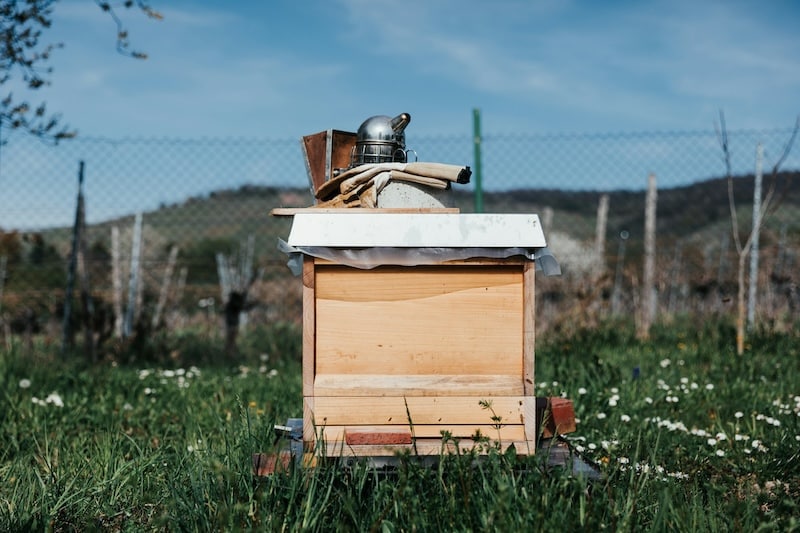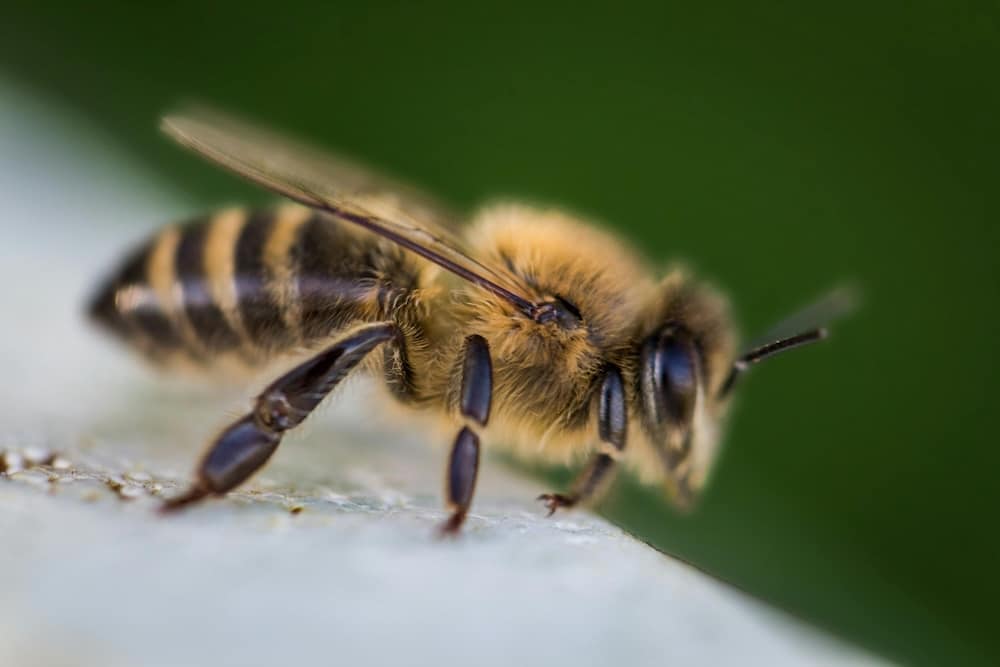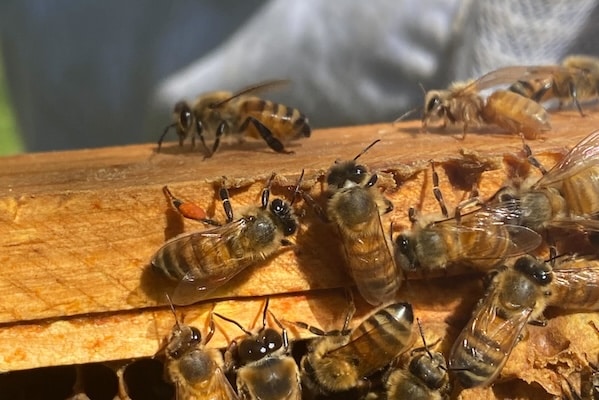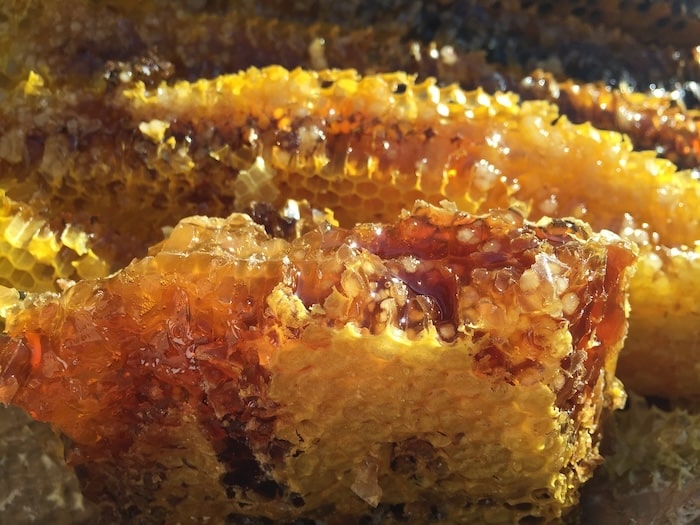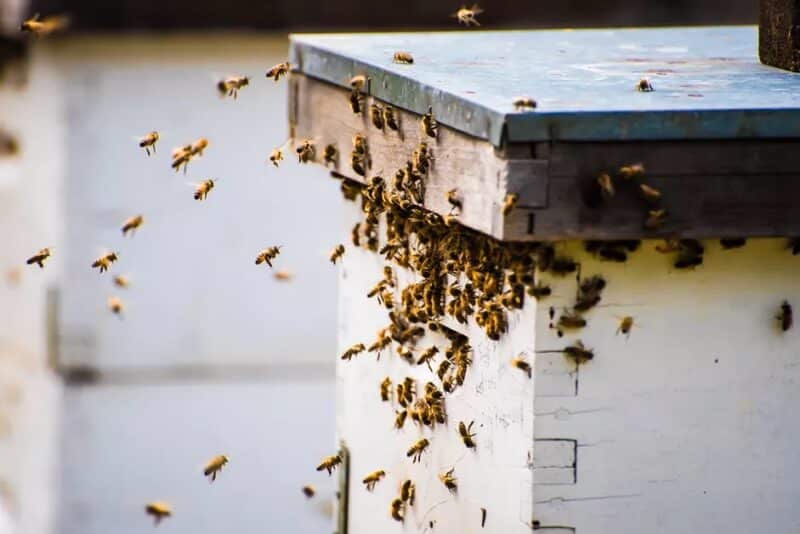Contents:
- Facts about Bees and Beekeeping: History, Mythology, Folklore
- Bee Facts: Bee Anatomy and Lifecycle
- Facts about Bee Behaviors
- Facts about Queen Bees
- Facts about Worker Bees
- Facts about Drone Bees
- Bee Facts: Inside the Hive
- Facts about Native Bees
- Facts about Pollination
- Facts about Bees’ Impact on Agriculture and the Economy
- Facts about Threats to Bees
- Facts About Honey
- Beeswax and Bee Bread Facts
- Facts about Beekeeping
- Fun Bee Facts: Famous Beekeepers
- Facts about Bees and Science
There have been bees on planet earth for more than 100 million years. Mankind learned to harvest honey almost 8,000 years ago, and bees, the critical role they play in agriculture, and their gifts to us — the honey, pollen, and wax we harvest from their hives – have been integral to our species ever since.
If you’re as interested in bees as we are, you can never get enough information about these amazing creatures. To whet your appetite about all there is to learn, we’ve compiled what we believe is the largest collection of bee facts available today: 135 facts we’re certain you’ll find fascinating.
–– Interested to know how the bees are doing? Download our State of the Honey Bee Report now ––
Facts about Bees and Beekeeping: History, Mythology, Folklore
- Bees have existed for more than 100 million years.
- Ancient peoples believed that bees were created from the carcasses of dead animals.
- Bees feature prominently in various accounts of Zeus’s birth and infancy – some state that the cave in which he was hidden in to protect him from his father, Kronos, was the home of sacred bees, and the bees fed him honey themselves. Others say that Melissae, the nymph who was shown the use of honey by the bees, nursed him, feeding him honey and milk. – Elsa Scott, Best Bees Marketing Coordinator
- Ancient Egyptians believed bees to be the tears of the sun god, Ra.
- The name ‘Melissa’ is derived from the Greek word for honey bee.
- The ancient Greeks minted coins with bees on them.
- Honey bees and honey are mentioned in the bible and in ancient Sanskrit texts.
- The first record of honey harvesting is a cave painting from 6,000-8,000 year-old caves in Spain.
- Fermented honey, known as mead, was first produced in ancient China around 7,000 BCE, making it the world’s oldest alcoholic beverage.
- The first civilization to practice widespread, organized beekeeping was the ancient Egyptians, who began beekeeping around 2,500 BCE.
- Still-edible, 3,000 year old honey was found in King Tutankhamen’s tomb when it was opened in 1922.
- The Magna Carta legalized the harvesting of wild honey by common folk.
- In nineteenth-century New England, it was held to be essential to whisper to beehives of a loved one’s death. This ritual, known as “telling the bees,” involved notifying honey bees of major events in the beekeeper’s life, such as a death or marriage.
- Saint Valentine is the patron saint of beekeepers, and also love. – Hanieka Balint, Best Bees Graphic Designer
To learn more about the history of bees and beekeeping, read our blog, The History of Beekeeping.
New Facts as of 10/09/2024:
- Historic figures such as Hippocrates, Pliny the Elder, and Pythagorus documented their beliefs in the healing powers of bee pollen and prescribed it as a remedy for various ailments.
- Bee venom as been used in apitherapy for thousands of years to treat inflammation and joint pain.
Bee Facts: Bee Anatomy and Lifecycle
- Honey bees have 170 odorant receptors and have a sense of smell 50 times more powerful than a dog.
- Bees have 2 stomachs – one for eating, and one for storing nectar and processing it into honey.
- Honey bees’ antennae have more than 300 taste receptors.
- Bees have five eyes. – Noah Wilson-Rich, Best Bees Chief Science Officer
- Honey bee brains are about the size of a sesame seed.
- A pollen basket, or corbicula, is the structure on the outer hind leg of worker honey bees that holds the pollen.
- Honey bees cannot see red light but can see ultraviolet light. This enables them to see intricate ultraviolet light patterns on flower petals that humans cannot see! – Katie White, Best Bees Lead Beekeeper, Denver
- Honey bee eggs hatch after three days and develop into larvae. When fully grown, the larvae transform into pupae. Queens become adults the fastest; they mature fully in just 16 days; workers take 21 days, and drones 2 take the longest — 24 days.
- Worker bees are the smallest of the three types of honey bees, growing to just 10-15mm when mature. Drones are about 50% bigger, reaching 15-17mm as adults, and queens are the largest — almost twice the size of worker bees — 18-20mm at maturity.
- Worker bees live for about two to four weeks in the summer, but if they hatch late and are part of the hive that remains for the winter, they live for up to 11 months. These winter bees are called diutinus – a Latin word that means “long-lasting.”
- Drones live for four to eight weeks in the summer months and die soon after mating; they are never kept in the hive during the winter. Queens usually live for two to three years; some may for as many as five years.
- Worker bees have longer wings than drones; drones have bigger eyes than worker bees.
- Both worker bees and queens have stingers; drones are stingless.
To learn more about the lives of bees, read our blog, The Honey Bee Lifecycle.
New Facts as of 10/09/2024:
- Honey bees can taste with their feet! The claws on a honey bee’s foot are especially attuned to salt.
- Honey bee eyes are textured with the same hexagonal pattern as honeycomb.
- Because of bees’ acute sense of smell, they can be trained to detect explosives, bombs, and landmines, as well as other chemicals of interest!
- Honey bees’ fuzzy bodies pose a disadvantage to flying in wet, rainy conditions – water droplets adhere to a bee’s body fuzz, adding extra weight which means she requires more energy to remain in motion.
Facts about Bee Behaviors
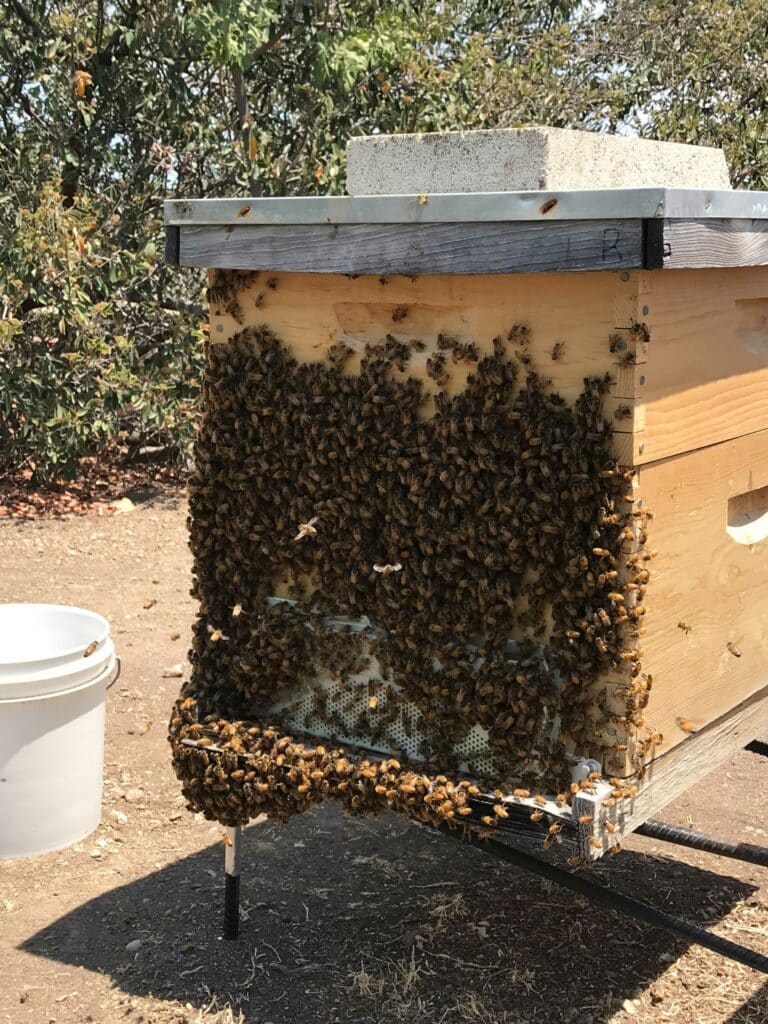
- On a single foraging trip, a worker bee will visit between 50 and 100 flowers.
- A single bee can carry up to 35% of their body weight in pollen.
- When a bee finds a promising food source, it passes on that information to the others when it returns to the hive through what is called the “waggle dance.” Waggle dances are made up of two phases — a rapidly undulating waggle phase and a semi-circular return phase that together create a kind of figure eight. The bee will complete 1 to 100 of these; the direction and number of circuits tells observing bees the location, distance and size of the food source.
- During warm months, worker bees can congregate on the outside of the hive in parallel rows. They sway rhythmically, scraping at the hive sides or landing board in what looks like cleaning behavior, but the purpose of this communal action is not known. Because it resembles human washing, it’s called “washboarding.”
- During the late summer when nectar is scarce, some desperate bees will turn to hive robbing to keep their colonies alive.
- When the weather gets hot, and nectar is scarce, worker bees will come out of their hives and hang out together on the side of the hive to keep cool. These masses of idle bees can look like the hive has grown a beard, and so this phenomenon is called “bee bearding.”
- Bees navigate using the sun as we would a compass, and because they can see polarized light, are able to find their way even on cloudy days. There is some evidence that bees are also sensitive to the earth’s magnetism and may use it to navigate as well.
- When temperatures drop below around 50 °F, the queen and worker bees form a ball to conserve heat. To generate more heat, they rapidly move their wings, shake and shiver. At the center of the ball near where the queen stays, temperatures will be maintained at 90–100 °F.
- Bees also communicate within the hive by releasing chemicals called pheromones. As workers groom and feed hive members, they pass on these pheromones that indicate the health of the hive.
- The queen bee releases her own distinct pheromone called Queen Mandibular Pheromone, or QMP.
- Every bee colony has its own distinct scent, or pheromones, so that members can identify each other.
- Honey bees are generally not aggressive — they’ll only attack when the believe their hive is threatened.
- While bee venom is more deadly than cobra venom, it would take more than 3,800 bee stings to kill the average human male.
- Other than the queen, all bees defecate outside the hive.
- Honey bees work 24/7 to keep their hives clean, hauling out dust, hairs and pests.
- Honey bees are so obsessed with cleanliness that most will leave the hive when they know it’s time to die, to avoid contaminating brood and food stocks.
- There are workers bees in the hive whose job is that of an undertaker, removing bees that didn’t make it outside the hive before dying.
- Honey bees do sleep! But when they sleep, how deeply, and for how long depends on their age and role within the hive. Foragers typically sleep at night, and they sleep more deeply than their hive worker bee, known as “house bees”, counterparts. Foragers are typically older bees, and their work takes place during the day. House bees are younger bees, and their duties are necessary day and night. Therefore, they sleep whenever they can over a 24 hour period.
- Cumulatively, bees sleep between five to eight hours, but these are broken up into as many as 40 to 50 naps per day.
- There are just three types of honey bees: queens, workers and drones.
- Worker bees are split up into two main categories: foragers and house bees. House bees have many different roles and duties inside the hive, including nursing brood, packing pollen, capping cells in the comb, attending to the queen, and more. Foragers work outside of the hive, collecting resources or guarding the colony.
To learn more about different bee behaviors read our blogs The Basics of Bee Bearing: What It Is, Why It Happens and What to Look for and Robber Bees and Bee Robbing: What They Are and What They Do
New Facts as of 10/09/2024:
- Honey bees do not store much water within the hive; instead, a group of specialized foragers collects it on an “as needed” basis.
- While the exact note varies, the sound honey bees produce (their buzzing) tends to be in the key of C.
- When bees fly, the rapid flapping of the wings builds up a positive static electric charge which attract the negatively charged pollen grains.
- Bees maintain a temperature of 92-93 degrees Fahrenheit in their central brood nest at all times, regardless of whether the outside temperature is 110 or -40 degrees.
- Worker honey bees cycle through the various jobs within the hive as they age. Nurse bees, the ones feeding the baby bees, are the youngest, and foragers are the oldest.
- Older honey bees effectively reverse brain aging when they change social roles in this hive, particularly when, after foraging, they revert back to nursing – a role typically handled by young bees.
- Honey bees use their wings to cool their hives by fanning the air to circulate it through the hive or in and out of the entrance.
- Honey bees like caffeine! Studies have shown that caffeine consumption actually improves honey bees’ memory and learning capabilities.
Facts about Queen Bees
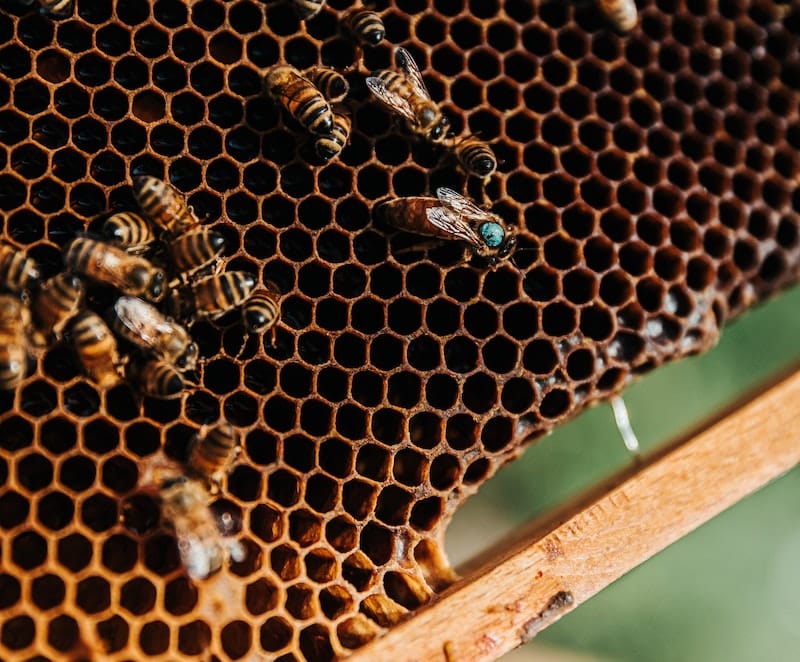
- Queen bees are created by being consistently fed royal jelly, a milky substance secreted by a gland found in a worker bee’s head. All bee larvae — workers, drones, and queens — are initially fed it, but workers and drone larvae stop getting the jelly after three days, while the queen bee larvae are fed it through the entire larval period.
- When a queen dies, or a hive is ready to swarm, worker bees will raise a number of queens. When they hatch, they fight with each other. The winner succeeds by stinging all of her rivals to death.
- When it’s time to mate, virgin queens leave the hive and fly to a Drone Congregation Area (DCA) – a place where drones have assembled. Drones attempt to mate with the queen during her flight, and each one that successfully mates with her dies in a few hours or days.
- The queen’s mating flights happen several times, with a queen mating with up to 40 males per flight, usually averaging around 10 to 20. When she completes her last flight, she never mates again, but her eggs are fertilized for the rest of her life.
- Queens can lay between 2,000 and 3,000 eggs per day.
- In their prime, queens lay an egg every 43 seconds.
- A queen bee’s stinger is smooth, unlike a worker bee’s, which is barbed. This allows her to sting multiple times and survive.
- If a queen is removed from her hive, the loss of her pheromones alerts the hive within 15 minutes to her absence.
To learn more about queen bees, read our blog The Role of the Queen Bee in a Hive.
New Facts as of 10/09/2024:
- When a new queen bee emerges from her cell, she must defeat her sister queens before she can assume the throne. However, two or more queens may roam for hours within the same hive without fighting.
- As soon as one queen touches another’s abdomen, they immediately begin to fight. Researchers believe that there may be a battle signal located between a queen’s abdominal segments that, upon physical contact, triggers her to fight.
- A common battle strategy involves one queen spraying the other with her poop — young queens produce a sweet-smelling rectal fluid that attracts worker bees, who will swarm the sprayed queen, leaving her immobilized and vulnerable to being stung by her opponent.
- Once a queen is free from her cell, she will begin ‘piping’. This tooting-like sound prompts the queens still held in their queen cells to respond by pressing their wings against the cell walls and producing short, pulsating notes that sound similar to the quacking of a duck.
Facts about Worker Bees
- Worker bees, like queen bees, are developed from fertilized eggs.
- Worker bees are 75% genetically related to each other, whereas human siblings are only 50% genetically related to each other. – Nola, Best Bees Director of Product Fulfillment
- With such close genetic connections, worker bees are called Super Sisters. – Noah Wilson-Rich, Best Bees Chief Science Officer
- The roles of worker bees change as they age: they start cleaning the honeycomb cells to prepare them for eggs or food storage, then move on to waste removal, nectar processing, and feeding the brood. When their wax gland becomes active in their second week as adult bees, they build and repair comb. From week two to three, they take on guard duties. After three weeks, their wax glands shrink, and they move out of the hive, and spend the rest of their lives on foraging for food and water.
- When out foraging, worker bees can fly up to 20 miles per hour. To achieve this, they beat their wings 200 times a second. This is what creates the iconic bee “bzzz” sound.
- During a typical day foraging, worker bees will make 30 trips, usually within a two-mile radius of her hive, but may fly as far as 5-6 miles when food is scarce.
Facts about Drone Bees
- Drones develop from unfertilized eggs, and so have no father. They only have a mother and a grandfather. – Noah Wilson-Rich, Best Bees Chief Science Officer
- Drones have larger eyes on the top of their heads to help them identify queens during mating season.
- During the mating period, colonies will consist of 10-15% drones. In a hive with 40,000 bees, that equates to 4-6,000 drones.
- During the mating period, as many as 25,000 drones, from dozens of different hives, will meet in a drone congregation area, to mate with queens from surrounding hives.
- Only a handful ever get to mate with a queen. Those that do, die quickly afterwards. The rest live for about a month, flying out each warm day in search of a queen to mate with.
- Virgin queens will mate with 10-40 different drones.
- Once the fall comes, the worker bees will kick the drones out of the hive in what is known as “the expulsion of the drones.“
To learn more about the roles drones, workers and queens play, read our blog Hive Hierarchy: Drone Bee, Worker Bee, and Queen Bee.
Bee Facts: Inside the Hive
- The wax comb within the hive is produced by worker bees from wax secreted from glands in their abdomens. After flaking off the bees, other workers chew the wax to soften it, and then use the soft wax to form hexagonal cells. These wax cells are called comb and have three functions: 1) to store honey; 2) to transform pollen into bee bread; and 3) to raise new bees.
- Beehives have evolved over millennia. The first hives, made of woven reeds or straw, were cylindrical in shape, with conical dome. These are called skeps. In the 18th century, beekeepers experimented with new designs that would allow extraction of honey without destroying the hive. In the mid 19th century, Lorenzo Langstroth, an amateur beekeeper in Pennsylvania, too these a step further and developed bee boxes with carefully spaced vertical frames that bees could build their comb on that beekeepers could remove to extract honey. Recently, inventors have developed hives with automated honey extraction.
- The most common type of bee hive today is the Langstroth hive — a series of wooden boxes with a roof and base, with wooden frames holding comb hanging in rows within each box.
- Other hive types are the Top Bar hive, also called a horizontal hive, with bars inside running horizontally that bees hang their comb from; the Warre hive, which consists of stacked boxes, like the Langstroth hive, but with boxes added at the bottom, rather than the top, and no internal frames; and the Flow Hive, which is similar to the Langstroth hive is structure, but includes a mechanism for uncapping honey cells, and letting the honey flow out into a storage container, without opening the hive.
- Langstroth hives consist of 2-3 stacked boxes, with 1-2 shallow boxes, or “honey supers” at the top and a deep box, known as a hive body, below. At the base is a bottom board, which acts as the hive’s floor. At the top is an inner cover, and above it is an outer cover, which acts as the hive’s roof. Between the Hive body and the hey supers there is often an excluder frame, which keeps the queen in the hive body laying eggs, and out of the honey stores.
- Healthy beehives can house between 20,000 and 80,000 honey bees.
- In the spring, typical hives are just one box deep. In the spring and early summer, as colonies and their honey stocks grow, beekeepers will ad a second or third box, as needed.
To learn more about beehives, read our blogs Types of Beehives and Bee Boxes: Managing Colony Growth and Smart Hives: A Radical Rethink of Beekeeping.
Facts about Native Bees
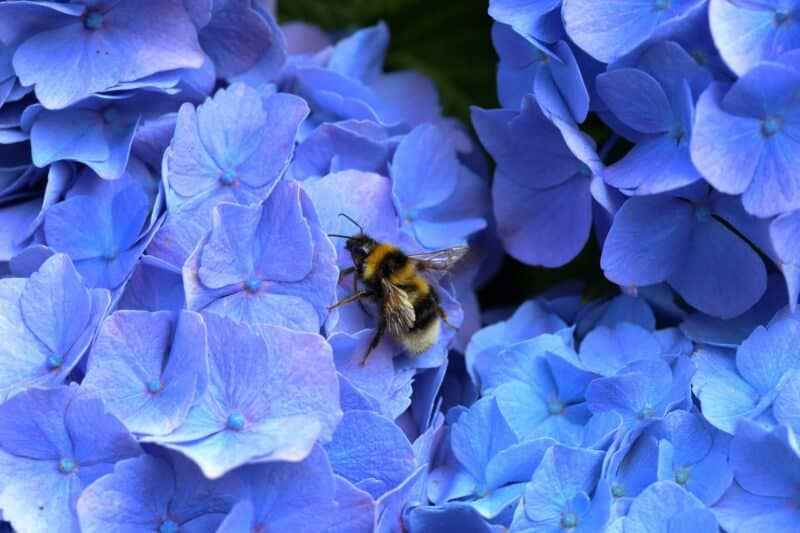
- Worldwide there are over 200,000 different species of pollinators, including not just bees, birds, and butterflies, but bats, beetles, flies, moths, small mammals, and wasps.
- There are more than 4,000 species of native bees in the U.S. alone.
- Unlike honeybees which can live in large colonies of 50,000 or more, and bumble bees, which typically form nests of 50-500, most native bees are solitary.
- Bumble bees have a unique approach to foraging called buzz pollination. They grab the flower’s pollen-bearing anthers with their mandibles, decouple their wings, and activate their flight muscles. This transfers the vibration to the anthers, shaking the pollen onto their bodies.
- Several important crops native to the Americas — blueberries, cranberries, peppers, and tomatoes — are pollinated primarily by native pollinators, like bumblebees, that have evolved to employ this technique.
To learn more about native bees and other native pollinators, read our blogs Wild Bees and Native Pollinators and Exploring Bees: 14 Types of Bees and Bee Varieties.
Facts about Pollination
- Flowering plants represent over 90% of all plant species, and of these, more than 80% depend on a pollinator for reproduction.
- More than 75% of the food we eat depends on pollinators.
- More than half of the world’s diet of fats and oils come from animal-pollinated plants like canola and sunflowers.
- More than 150 fruit, grain, seed and vegetable crops in the U.S. depend on pollinators.
- The honey bee is the most frequent single species of pollinator worldwide.
- While the most common pollinator is the bee, plants are also pollinated by ants, bats, beetles, butterflies, flies, moths, and wasps.
To learn more about pollinators and the plants they need, read our blog The Best Bees Checklist for a Pollinator Garden.
New Facts as of 10/09/2024:
- Pollinators see big patches of flowers better than individual ones. Planting big patches of each plant species helps improve foraging efficiency!
Facts about Bees’ Impact on Agriculture and the Economy
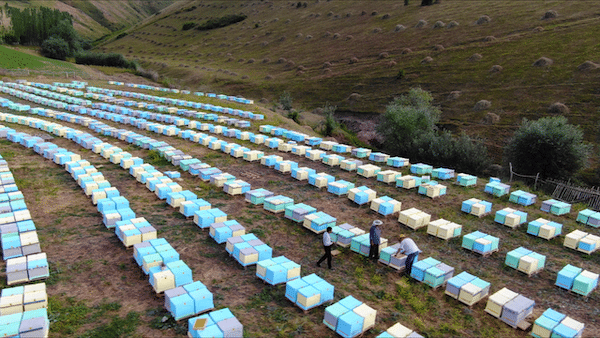
- Approximately one third of the food we eat is the result of honey bee pollination.
- Honey bees are the only insect that produces food consumed by humans.
- Bees pollinate more than 150 commercial crops.
- In 2017, the US honey industry was responsible for more than 22,000 jobs.
- Through agricultural pollination, bees contribute nearly $20 billion to the U.S. economy, and account for as much as $577 billion globally.
- According to the USDA’s Economic Research Service, the honey bee pollination services are worth between $250 million and $320 million annually.
To learn more about bees impact on agriculture and the economy, read our blog The Importance of Pollination for Agriculture, The Economy and The Planet.
Facts about Threats to Bees
- Over 1 billion pounds of pesticides are used in the United State each year.
- According to the Xerxes Society, 90% or more of beehives show evidence of some pesticide contamination.
- Pesticides and herbicides can be lethal to bees. When they don’t kill bees outright, they can weaken bees physically and impair cognitive functioning – which weakens the colony and makes them more vulnerable to other pathogens.
- More than 40% of all honey bee colonies are lost each year in the United States due primarily to a combination of pests, poisons and habitat loss.
- Common pests attacking honey bee hives are insects, such as varroa mites, small hive beetles, & wax moths, and bacteria such as American & European Foulbrood.
- Even with the loss of so many hives each year, there are still about 2 trillion remaining on our planet.
To learn more about threats to bees, read our blogs Impact of Pesticides on Pollinators and Integrated Pest Management Strategies and Why Are the Bees Dying?
Facts About Honey
- Honey is 25% sweeter than sugar.
- Dark honey typically has more antioxidant properties than light honey.
- A healthy bee colony can create 60-100 pounds of honey each year.
- Ancient Egyptians used honey as a means of paying taxes.
- A single bee will produce only about 1/12 of a teaspoon of honey in its lifetime.
- Honey bees visit about 2 million flowers to produce a pound of honey.
- According to Grand View Research, the global honey market value is expected to reach $13.6 billion by 2030.
- The #1 honey producing state is North Dakota.
- Honey bees are the only insects to produce food consumed by humans.
- The average American consumes about 1.3 pounds of honey each year.
- Honey-making is not an inherited trait; young worker bees are taught how to make honey by their elders.
- The word “honeymoon” comes from the ancient practice of giving a newlywed couple a month’s worth of mead — honey wine — to promote fertility.
- Honey is antibacterial, antimicrobial, and anti-inflammatory; it can be used to help treat wounds.
- Honey is a natural humectant and emollient.
To learn more about how bees make honey and its many uses, read our blog Breaking down the 7 Extraordinary Benefits of Honey.
Beeswax and Bee Bread Facts
- Young “house” bees, less than 17 days old, must consume 8-10 lbs. of honey in order to produce 1 lb. of wax. – Nancy Thorne, Best Bees Beekeeper Pittsburgh
- Female worker bees produce cera alba, or beeswax, from 4 pairs of specialized glands on the underside of their abdomen. The wax is secreted as a liquid but immediately solidifies as it hits the cool air, transforming it into thin flakes. – Nancy Thorne, Best Bees Beekeeper Pittsburgh
- Beeswax is used by worker bees to construct comb where the queen lays egg and workers store nectar, honey and pollen. – Nancy Thorne, Best Bees Beekeeper Pittsburgh
- Beeswax has a neutral ph of 7.
- After nectar, protein pollen is one of the key elements in the honey bee’s diet. Bee colonies can collect more than 60 lbs. of pollen each year.
- Foraging worker bees bring the pollen back to the hive where younger worker bees mix the pollen with saliva and a small amount of honey. The saliva includes enzymes that break down the pollen, making it digestible and prevent spoilage. This solution is stored in combs, where it transforms into “bee bread”: an easily digestible, protein and mineral rich staple that will keep for months.
To learn more about beeswax and bee bread, read our blogs Honeycomb: One of Nature’s Most Beautiful and Useful Substances and Bee Pollen and Bee Bread: Natural Superfoods.
Facts about Beekeeping Today
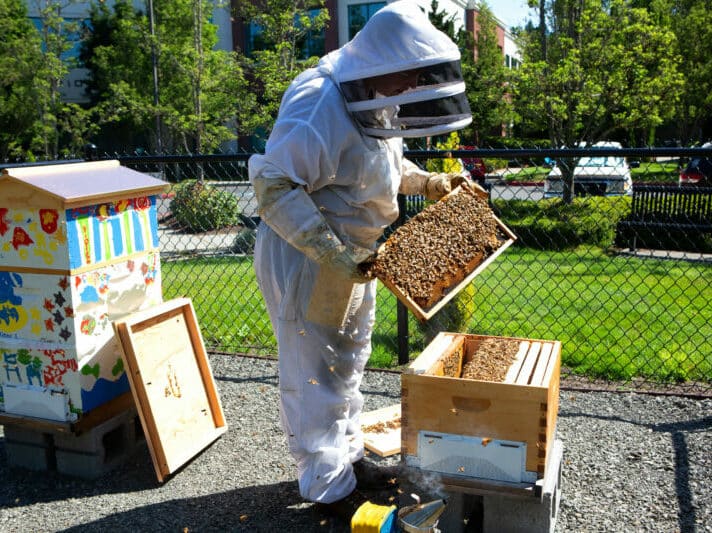
- A beekeeper’s suit is usually white because bees react strongly to dark colors.
- More than 100,000 people keep bees in the U.S., and among these an estimated 18,100 are professional beekeepers, who earn all or part of their income from beekeeping.
- Adee Honey Farms in South Dakota is the largest commercial beekeeping company in America, with over 80,000 farms.
- There are people in Africa that keep elephants out of their fields by placing beehives around the fields in what is called a “bee fence.”
To learn more about the practice of beekeeping, read our blog Backyard Beekeeping 101: All You Need to Know.
Fun Bee Facts: Famous Beekeepers
- Popular actors and actresses keep bees, including Leonardo DiCaprio, Henry Fonda, Morgan Freeman, Scarlett Johansson, and Robert Redford.
- Rock Stars Flea (Red Hot Chili Peppers), Jon Bon Jovi, and Sting keep bees.
- Noted authors have kept bees, including Emily Dickinson, Sylvia Plath, and Leo Tolstoy. Bees inspired many of Dickinson’s poems.
- Founding fathers George Washington and Thomas Jefferson kept bees.
- Michelle Obama had beehives set up on the White House grounds.
To learn more about famous beekeepers, read our blog Celebrity Beekeepers.
Facts about Bees and Science
- Bees are being used to study dementia. When a bee takes on a new job usually done by a younger bee, its brain stops aging.
- Bees are being trained in Croatia to identify land mines —by lacing their food with traces of TNT, honey bees, because of their acute sense of smell, will gather on the ground where land mines are present.
- If we want to design automatic facial recognition systems, we could learn a lot by using the bees’ approach to facial recognition.
- Bees have been to outer space and produced honeycomb in zero gravity.
- When bees fly, hairs on their bodies collect a small amount of electrostatic charge. Scientists have discovered that swarming bees can generate 100 to 1000 volts per meter — similar to a thunderstorm.
- Research on honey bees shows that they can do simple math.
- Research on bumble bees shows that they make small incisions on plant stems to promote early flowering.
Interested in bees and science? Read our blog Taking Citizen Science to the Next Level.
New Facts as of 10/09/2024:
- Austrian scientist Karl von Frisch was awarded the Nobel Prize in 1973 for his work in translating the meaning of the honey bee waggle dance.


